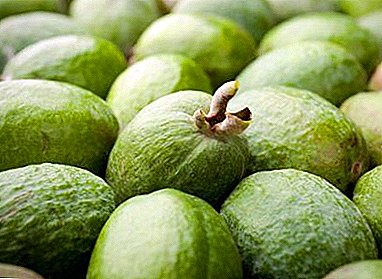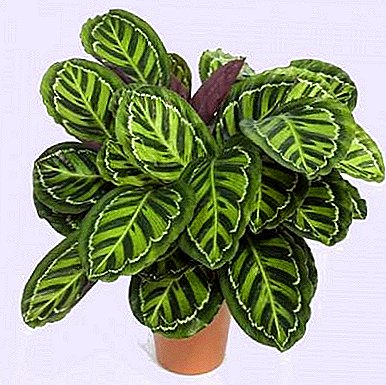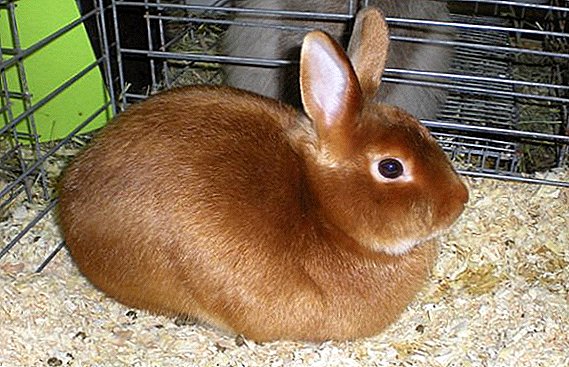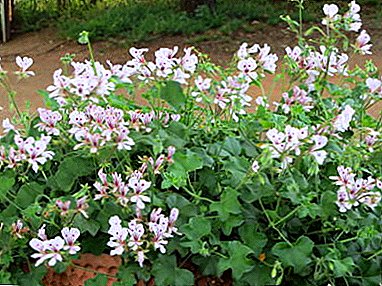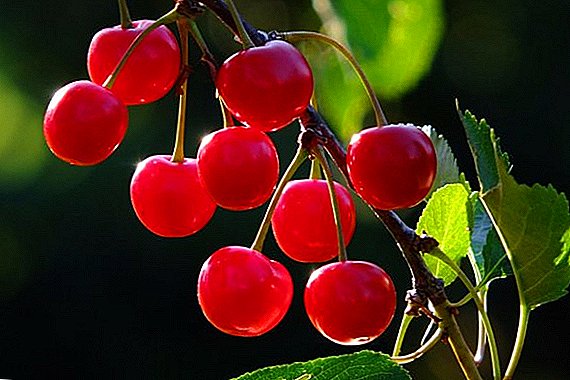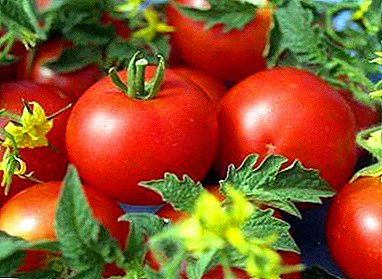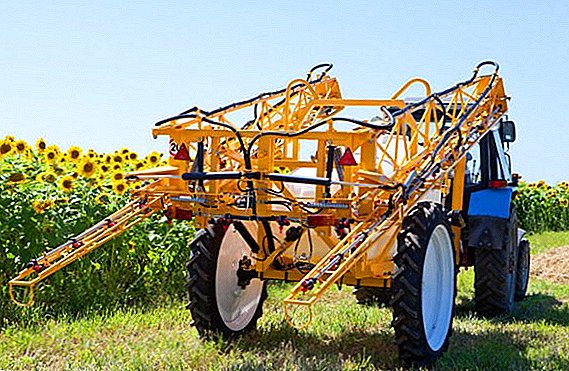 Modern agriculture is impossible without automation. You can manually deal with weeds and pests on the dacha five hectare, but for the treatment of large areas, this method is absolutely not suitable. One of the devices that every farmer who wants a good harvest needs to have is a sprayer. There are many different modifications of such tools, each of which allows you to solve quite specific tasks, and with certain basic knowledge and ingenuity, you can even make a sprayer with your own hands.
Modern agriculture is impossible without automation. You can manually deal with weeds and pests on the dacha five hectare, but for the treatment of large areas, this method is absolutely not suitable. One of the devices that every farmer who wants a good harvest needs to have is a sprayer. There are many different modifications of such tools, each of which allows you to solve quite specific tasks, and with certain basic knowledge and ingenuity, you can even make a sprayer with your own hands.
Where apply
The sprayer is essentially a spray gun. The meaning of this device is to spray small particles of water or other liquid over a large area using a jet of compressed air supplied under pressure. 
Such an approach allows not only to quickly and efficiently process large areas, but also to significantly save the consumption of the liquid used in this process.
Sprayers, in particular, trailed, mainly used, of course, in agriculture.
With their help, produced:
- irrigation of fields, which provides not only the introduction of moisture into the soil and the protection of plants from drought, but also the moistening of the lower layer of air, as well as a decrease in its temperature (during particularly hot months, such measures are simply necessary to preserve the crops);
- the introduction of liquid fertilizers and growth regulators, without which in modern conditions obtaining a competitive crop is impossible;
- treatment of plants from diseases and pests (fungicides, insecticides and other pesticides are used for these purposes);
- weed control, which is also very bad for crops (for example, it is completely unrealistic to weed the crops by hand).

Did you know? Harvesting sugar beets from areas not treated by weeds increases the consumption of the time required for this by about 80%.
However, the devices in question are not only used by farmers. So, for example, with their help watering of football fields, and in some cases also large lawns, is carried out.
Varieties
Modern sprayers differ from each other according to a variety of criteria, in particular:
- by the method of pumping air (pump, mechanical, battery, gasoline, diesel);
- by tank volume (large, small, medium);
- according to the degree of spraying of the working solution (ultravolume volume, low volume, normal);
- by fastening method (mounted, trailed, self-propelled);
- the type of distribution of fluid (fan, hose);
- by appointment (special, universal).

Consider the main differences between the devices according to the main criteria mentioned.
It will also be useful for you to learn about the criteria for selecting a mini-tractor, as well as familiarize yourself with the technical characteristics of the tractor Belarus MT3 1221, Kirovets K-744, DT-54, DT-20, Bulat-120, Belarus-132n, T-30, MT3 320 , Uralets-220, MT3 892, MT3 1221, how to make a homemade mini-tractor.
By fastening method
The device of any tractor provides a special attachment mechanism that allows you to use this universal agricultural machine for solving various tasks. Mounted sprayers belong to the types of equipment that can be mounted on a tractor in a similar way.
This type of sprayer has a relatively small tank for the working fluid (usually 600-800 liters) and rods with a span of 12-18 m. However, there are devices designed for much more significant treatment areas, and their tank volume can amount to thousands of liters.
These models are suitable for large agricultural enterprises, while the small farmer can choose the cheaper option. 
Mounted sprayers vary in performance, processing speed and other criteria.
So, using expensive models, you can handle tens of hectares of space per hour at an average speed of 15 km / h, but even equipment with a small tank capacity allows you to solve tasks quickly and efficiently.
Among the advantages of mounted devices are usually noted:
- good maneuverability;
- compatibility with domestic tractors;
- full automation (no human intervention required);
- reliability and long-term operation (with careful handling and proper maintenance).
The second type of attachment of the spray gun to the tractor is trailed. This type is distinguished by a deliberately large working volume of the tank, usually the capacity is calculated on two to four thousand liters. 
The same applies to the span of the rods (if the attachment of this parameter usually does not exceed 18 m, then the trailed one starts from 24 m and can reach 36 m). Thus, this option is more suitable for large farms, as it is designed for processing areas in the hundreds of hectares.
Otherwise, the above advantages of mounted sprayers can equally be attributed to trailing devices, and the disadvantage of both varieties is the dependence on the low clearance of the tractor, which leads to partial damage to plantations (especially tall ones) as a result of the movement of such a machine across the field.
Important! Farmers call low speed as the main disadvantage of mounted and trailed sprayers.
A self-propelled sprayer is a completely autonomous device that does not need a tractor. A wide range and variety of modifications allow you to choose a model with optimal parameters: wheel size, rod length, tank volume, performance, etc. 
The undoubted advantages of this type of agricultural equipment are:
- high level of automation, up to autopilot or heading indicator;
- the ability to adjust the degree of spraying and consumption of the working solution;
- smooth ride;
- high ground clearance;
- good speed performance;
- maneuverability;
- no need for installation work on the tractor and subsequent dismantling;
- strength and durability;
- environmental friendliness.
Learn about the advantages of the Neva MB2 motoblock, the Bison JR-Q12E, the Centaur 1081D, and also learn how to plow the motoblock with a plow, how to increase the functionality of the motoblock, how to make attachments for the motoblock.However, self-propelled sprayers have obvious drawbacks, in particular, this is a high price and limited scope of application (lack of universality).

By type of liquid distribution
According to this criterion, sprayers are divided into boom sprayers, in which spraying is carried out due to the hydrostatic pressure created in the system, and fan pressure, where the liquid is sprayed by internal pressure and air stream created by the fan.
As a rule, the first modification is used for work in the fields, and the second - in gardens and vineyards.
It should be noted that the fan device is of two types - dusty and chamber (tunnel). Preference for one or another species should be given depending on the planting pattern and the height of the plantings.
The main disadvantages of fan sprayers are uneven processing and significant loss of working fluid due to its penetration beyond the crown of trees and subsidence on the soil.  Blower Sprayer
Blower Sprayer
Important! Dust-type blower sprayers should not be used in windy weather or during daytime: all work should be done only in the morning or in the evening.
The tunnel type of construction makes it possible to almost completely solve this problem. In such devices, reuse of working solution losses is ensured (it returns to the working capacity), the quality of treatment reaches 100%, the liquid is not carried by the wind and does not accumulate on the soil.
Unfortunately, such devices are much more expensive and their performance is lower.
Boom sprayers provide maximum spray uniformity with a very small degree of deflection. 
To destination
Some sprayers are designed to handle a well-defined type of crop, they are called special. It is interesting to acquire such devices to those farms that focus on growing specific products.
Other models are universal, they are suitable for processing any crops, which is ensured, above all, by the presence in the set of different spraying devices that can be changed depending on the need.
To cultivate your site, it will be useful for you to learn how to choose a cultivator, about the advantages of a manual cultivator, how to use a tornado cultivator, and why soil cultivation is needed.
Attachment Sprayer Design
The mounted sprayer is a steel welded frame on which a tank of a certain volume is installed, equipped with the necessary working elements. 
The device system includes:
- pump;
- fluid container;
- spray system with built-in nozzles (depending on the modification it can be a fan, rods, masses, etc.);
- device for refueling;
- pressure reducing valves.
How to make yourself
For a person, at least a little versed in the technique, it is obvious that in the device of the sprayer, in general, there is nothing difficult. This means that you can save a significant amount of money and, instead of buying a ready-made sprayer, you can make it yourself.
At the same time, the finished model will perform as much as possible specific tasks that are supposed to be solved with its help.
Homemade sprayer: video
In this case, two approaches are possible. The first one is to use finished parts in the work, which can be purchased at any specialized agricultural equipment store, and act on the principle of a children's designer.
The resulting sprayer will cost a bit cheaper than the purchased one. The second is to achieve maximum savings by finding the use of available materials at hand, parts removed from a car, etc.
Anyway, we will need:
- tank for working solution - metal container or plastic barrel of the desired volume;
- round PVC tubes, profiles, other metal parts for frame production;
- steel corners with rectangular and round sections;
- sprays (for this purpose, ordinary spools are perfectly suited, which can be found at any tire changer station);
- 12 volt electric pump (this is the optimal power to achieve the required pressure).

Important! The electric pump is the most expensive device in the sprayer. In order not to buy a ready-made device, it is possible to adapt for this purpose an old car electric pump or a pump from a chainsaw.
Required tools:
- welding machine;
- scissors for metal;
- electric drill or screwdriver;
- hammer;
- pliers;
- measuring tool.
Getting Started:
- Place the pump inside the tank.
- From a corner, pipes and a metal profile we cook a frame of the suitable sizes.
- Welded to the frame platform, which will need to install the tank.
- We fix the tank on the platform.
- Install sprayers on the pipes.
- Fasten the pipe with spray to the tank.
- We attach the finished sprayer to the tractor hinge. The drive to the pump is supplied through the PTO (the unit transmitting the rotation from the motor to the attachment, it is on all tractors), and the hydraulic system will provide lifting and lowering of the sprayer.

Such a simple, hand-made device can provide a fairly high-quality processing of fairly large areas. Of course, you should not use it on an industrial scale, but for a plot of 40-50 acres - a great economical option!
How to choose the right one
Choosing a device of one type or another, first of all, you need to answer the main question: what is it for.
On a tiny dacha plot with five trees and three beds it is enough to get a primitive backpack-type spray gun, to process ten acres we need mechanization, and if we are talking about a serious industrial scale, it may be worthwhile to consider the purchase of a professional self-propelled device: very expensive, but very effective.
The same approach, in general, is worth using when deciding whether to make a self-made sprayer model: if for a small farmer this may prove to be a justifiable cost savings, then relying on long-term business, rely on equipment made from used components. there is a risk of losing much more. 
Did you know? Almost 90% of all fresh water used by man is spent in agriculture, and for every liter needed for growing vegetables, there are 12 liters spent on watering pastures.
In any case, there are several basic criteria by which a high-quality sprayer is selected, these characteristics must be taken into account when purchasing:
- the higher the degree of spraying of the working solution, the lower the risk of an overdose of toxic chemicals and fertilizers, and, hence, the plant receiving a chemical burn and yield loss; besides, good spraying provides the maximum economy of water and the used preparations;
- uniform spraying and completeness of processing ensure minimal loss of the working solution, maximum efficiency of agricultural procedures and their environmental safety;
- the likelihood of mechanical damage to plants during processing (low clearance of the tractor makes the use of mounted and trailed sprayers ineffective in processing such tall crops as, for example, sunflower or corn);
- productivity (for the treatment of small areas this criterion can be sacrificed, giving preference to a higher-quality model with a smaller tank size, but large agricultural producers need a large tank and a wide swing bar, which, on the contrary, will only interfere with a small field);
- the presence of interchangeable nozzles and the ability to adjust the pressure (this will allow the use of equipment for processing different crops);
- reliability and durability (price is the determining factor here);
- simplicity in installation and dismantle, convenience of transportation and operation.

Spraying is the procedure necessary to protect fields, gardens and vineyards from diseases, pests and weeds. The same procedure makes it possible to most effectively apply fertilizers necessary for the normal development of crops.
Small areas and household plots can be handled with hand-held devices, but a more serious technique is needed for a professional farmer.
There are sprayers that are installed on an existing machine, there are special self-propelled devices intended only for spraying liquid on the field.
In addition, there is always the opportunity to make the unit with their own hands, literally from improvised means. The choice depends on the task, financial capabilities and, of course, the presence of ability and inspiration.
Feedback from network users




